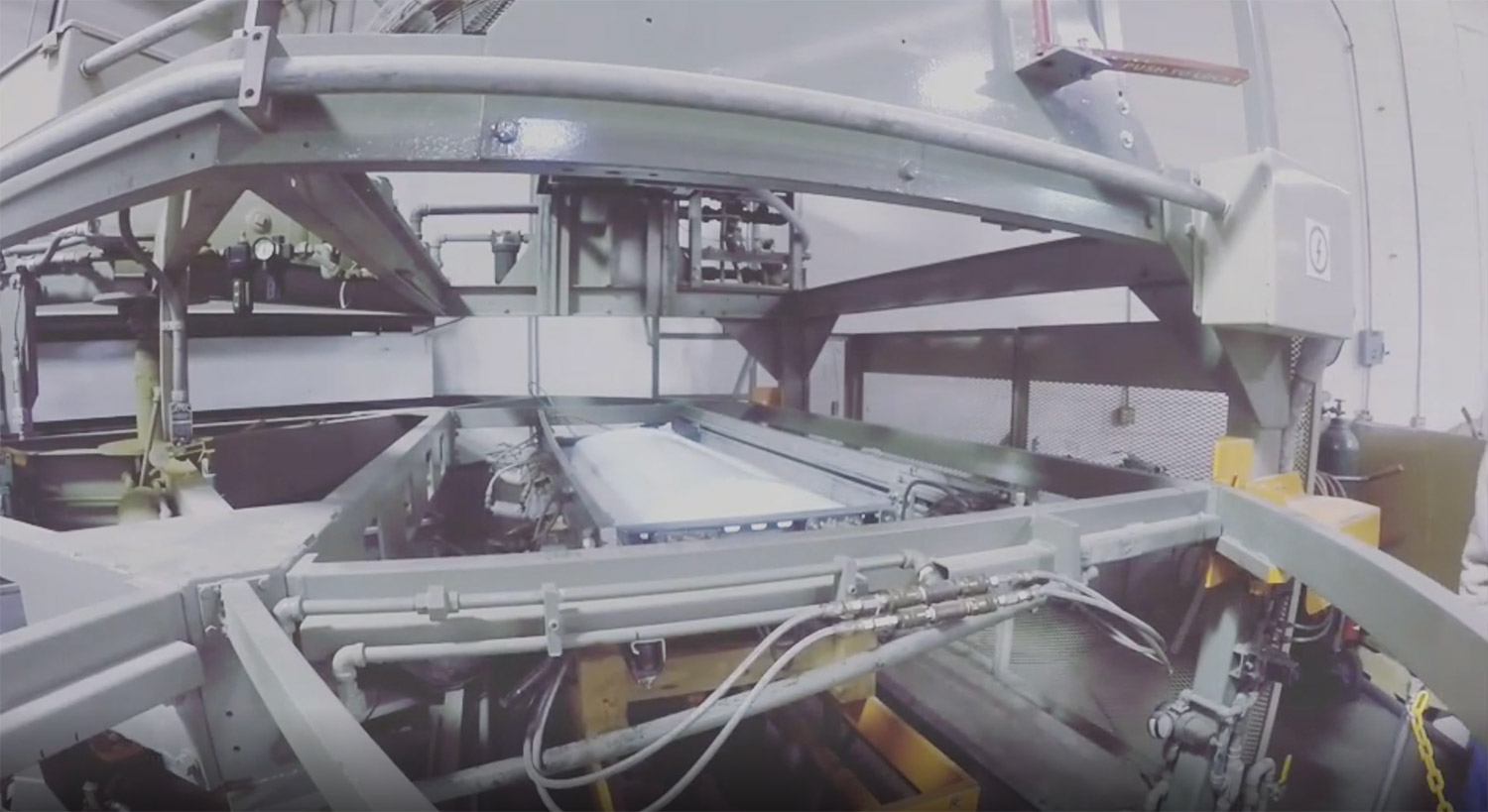Different products require different manufacturing processes. When choosing one, companies must take into account factors like the size of the part, the material strength, the shape, and the number of products desired, all of which have an impact on deciding which process will deliver the desired results. While sheet fabrication is ideal for customizing individual pieces or very low volumes, companies requiring higher volumes, a complex form, or a fast fabrication time may find that thermoforming is the optimal process that meets their needs.
Thermoforming (also known as vacuum forming or pressure forming) is a manufacturing process in which a mold is tooled into the desired design. Then, a plastic sheet is heated until it becomes soft and pliable; it is immediately stretched into or onto the mold and then trimmed to create a usable product. The sheet, sometimes called “film” when referring to a thinner size or certain material types, is then cooled to a finished shape.
Used by a variety of industries, thermoforming also plays a part in life sciences and biotech in applications such as reusable packing, part and material handling trays, buckets, and covers and lids. Below, you can see a few of the advantages that thermoforming offers manufacturers for these industries.

Low-Cost Fabrication
The majority of the cost involved in thermoforming is the creation of the mold, which is constructed relatively inexpensively. This is because the thermoforming process requires a relatively low level of forming pressure, so tooling can be constructed with less cost than tooling used in other processes. Prototypes and permanent molds can be substantially less expensive than either injection molding or sheet fabrication. Once the mold has been made, thermoforming fabrication expenses are virtually non-existent.
In addition, due to the rising cost of steel and fuel, plastic-formed products provide additional savings to manufacturers. Plastics do not rust out like steel or have the brittleness of fiberglass, lessening the chance of having to make costly replacements.
Faster Prototype Development and Fabrication
Thermoforming is ideal for producing high-volume products at a fast speed; very large production machines are used in a continuous high-speed process, which can produce many thousands of finished parts per hour.
Moreover, use of pre-colored plastic sheets, which can eliminate the need for post-production painting.
Thermoforming’s quick tooling turnaround, faster production runs, and ability to eliminate time-consuming steps like painting results in a faster time to customers.
Superior Aesthetics
An integral part of the thermoforming process is the tooling, which is specific to each part to be produced. With the ability to force the material to conform to every detail of the mold, thermoformed products are finished better, providing the precision needed for complex shapes and geometries. Also, from an aesthetic standpoint, the process is superior: Curves are gentler, smoother, and rounder.
Strong Physical Properties
Thermoformed products undergo less thermal stress. The heated sheet is virtually stress free because—when properly done—the sheet is stretched at the forming temperature before it is cooled against the mold. This process results in a finished part that has very little internal stress and that can, in some cases, be as strong as steel.
Ability to Form Very Large Parts
Although thermoforming is ideal for small- to medium-sized part runs of 50 – 5,000 pieces, manufacturers can also use it to create large parts. Part sizes up to 5 ft x 8 ft (1.524 x 2.44 m) can be thermoformed easily and economically, as compared to other methods.

Flexibility and Versatility
When working with thermoforming, manufacturers can choose from a wide variety of different plastic materials, including PET, ABS, HIPS, HDPE, PVC, PET, and PETG—each one of which has its own unique properties and strengths. As an added bonus, the plastics come in a vast variety of colors, finishes, and textures, allowing manufacturers to add detail to their products.
The thermoforming process also offers the option of different wall thicknesses that can be created from the same tooling. This ability can be a huge advantage in product development, when a consumer demands change, as new parts are brought to market, when part requirements change for a product, or when different versions of the same part—for example, light or heavy duty—are desired.
Environmentally sustainable
There is very little waste in the thermoforming process. Almost all thermoformed materials are recyclable, and instead of having to send scrap material to a landfill, manufacturers are able to collect and recycle excess material by granulating and extruding it with virgin resin into new sheet. Not only does this step help companies on their bottom line, it helps them meet and promote their sustainability goals—an increasingly important factor to consumers when choosing a source for their products.
Thermoforming is yet another tool in Acuity’s custom manufacturing toolbox
Manufacturers and OEMs can find answers to all their customization needs through Acuity’s expertise in both sheet fabrication and thermoforming. In addition, Acuity is the only company that offers custom thermoforming AND understands the complexity of the life sciences space. With years of industry experience in our collective pocket, we understand your needs and can provide critical advice in areas like design and material selection. Give us a call and we can help you in choosing the best process.



Leave a Reply
You must be logged in to post a comment.